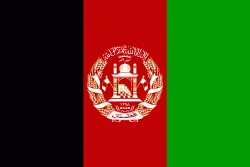Qaysar District (Qaīşār)
Qaisar (Qaysar or Qeysar) district is situated in the southwestern part of the Faryab Province of Afghanistan. In 2021, the population was 400,000 with an ethnic composition of 70% Uzbek (Turkic origin), 16% Tajik, 10% Pashtun and 4% Turkman. The district center Qeysar (35.6894°N, 64.2947°W,1279 m altitude) (Qaisar bazaar), at the edge of the vast desert of Qaisar, has almost the same peculiarities of the Almar bazaar. This bazaar received its name at the end of the nineteenth century.
Qaisar is popular for its great production of grapes and 70% of the district population own grape-gardens. The gardeners export tons of raisins to surrounding provinces in the north of the country and abroad to Russia and India as fresh grapes can not be exported due to transportation problems and bad road conditions.
The district is watered by the river which starts in the Terband-I-Turkistan Mountains and flows into Qaisar. The water source is from snow melts and springs. The temperature ranges between -20C (-4F) in winter and 40C (106F) in summer.
The district is the home of one of the most famous late poets of Afghanistan, Nadim Qaisari, from whom Afghans inherited a valuable poetry book named Dewan Nadim. The book was compiled and published by Information and Culture Department of Faryab Province after his death as it could not be published before due to lack of funding. The book contains the poetry works and cultural activities which Nadim achieved during the period of his life.
From 24 April to 7 May 2014, flash flooding from heavy rainfall resulted in the destruction of public facilities, roads and agricultural land. Assessment findings reported that 20 families were affected, seven people died, 700 livestock were killed, 1,000 gardens were damaged and 1,000 jeribs of agricultural land were damaged or destroyed (equivalent to 200 ha
Qaisar is popular for its great production of grapes and 70% of the district population own grape-gardens. The gardeners export tons of raisins to surrounding provinces in the north of the country and abroad to Russia and India as fresh grapes can not be exported due to transportation problems and bad road conditions.
The district is watered by the river which starts in the Terband-I-Turkistan Mountains and flows into Qaisar. The water source is from snow melts and springs. The temperature ranges between -20C (-4F) in winter and 40C (106F) in summer.
The district is the home of one of the most famous late poets of Afghanistan, Nadim Qaisari, from whom Afghans inherited a valuable poetry book named Dewan Nadim. The book was compiled and published by Information and Culture Department of Faryab Province after his death as it could not be published before due to lack of funding. The book contains the poetry works and cultural activities which Nadim achieved during the period of his life.
From 24 April to 7 May 2014, flash flooding from heavy rainfall resulted in the destruction of public facilities, roads and agricultural land. Assessment findings reported that 20 families were affected, seven people died, 700 livestock were killed, 1,000 gardens were damaged and 1,000 jeribs of agricultural land were damaged or destroyed (equivalent to 200 ha
Map - Qaysar District (Qaīşār)
Map
Country - Afghanistan
 |
 |
| Flag of Afghanistan | |
Human habitation in Afghanistan dates back to the Middle Paleolithic era, and the country's strategic location along the historic Silk Road has led it to being described, picturesquely, as the ‘roundabout of the ancient world’. Popularly referred to as the graveyard of empires, the land has historically been home to various peoples and has witnessed numerous military campaigns, including those by the Persians, Alexander the Great, the Maurya Empire, Arab Muslims, the Mongols, the British, the Soviet Union, and most recently by a US-led coalition. Afghanistan also served as the source from which the Greco-Bactrians and the Mughals, amongst others, rose to form major empires. The various conquests and periods in both the Iranian and Indian cultural spheres made the area a center for Zoroastrianism, Buddhism, Hinduism, and later Islam throughout history.
Currency / Language
| ISO | Currency | Symbol | Significant figures |
|---|---|---|---|
| AFN | Afghan afghani | Ø‹ | 2 |
| ISO | Language |
|---|---|
| PS | Pashto language |
| FA | Persian language |
| TK | Turkmen language |
| UZ | Uzbek language |















